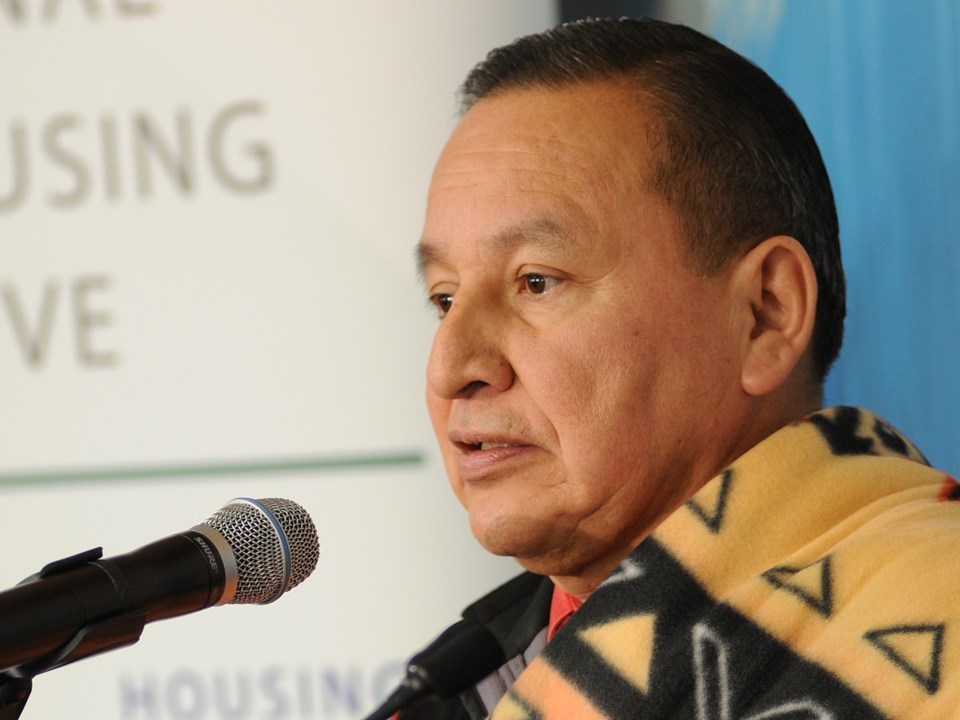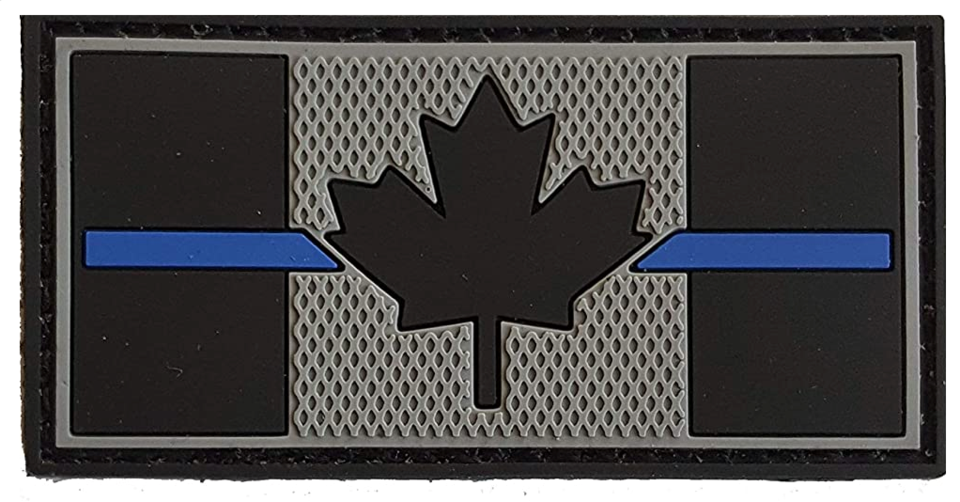Vancouver police officers are not authorized to wear the controversial thin blue line patch on their uniforms, according to a review by the department that was triggered by a complaint lodged by a citizen offended by the symbol.
The patch, which depicts a Canadian flag with a thin blue line running through it, was worn on the uniform of a Vancouver officer at a downtown protest in November 2021. A person subsequently filed a written complaint with the Office of the Police Complaint Commissioner.
“There was a white police officer who wore a white supremacist badge [Canadian flag with blue line through it] at a land back rally,” wrote the complainant in a heavily redacted complaint form, which didn’t include the person’s name or further explanation of the allegation.
The police board agreed in April 2022 with a recommendation from Police Chief Adam Palmer to have the department write a report based on the complaint and report back on the history of the patch and why officers wear it.
The review has been completed, along with a separate report detailing the history of the patch.
“This review determined that there is a specific VPD policy related to uniform and dress that includes a description of the approved order of dress for all VPD police uniforms,” said a report based on the review, which goes before the police board Thursday.
“Current policy states that no unauthorized modifications to member’s issued uniforms or accessories are permitted unless otherwise authorized. The thin blue line patch is not an authorized uniform item.”
The report said a reminder was sent Jan. 6 to all officers about the department’s uniform policy “to ensure their continued awareness of the importance of adhering to said policy.”
At the April 2022 board meeting, Palmer said the patch was worn by “a relatively small number” of officers. At the time, he said officers viewed the patch as a connection with fallen officers who have been killed in the line of duty.
“They see service and sacrifice, they see esprit de corps as members of the policing community — the brotherhood, sisterhood, that kind of idea,” Palmer said. “Officers wearing those patches are not wearing them as any kind of show of white supremacy, or anything like that.”
The board will decide Thursday what next steps should be taken, with the report authored by Deputy Chief Fiona Wilson recommending the board’s service and policy complaint review committee conclude its review of the complaint.
Indigenous, African descent committees
Police said they contacted the complainant in May 2022 and told the person that a review was being conducted, along with a report written on the history of the badge and symbol.
Police explained the matter was being forwarded to the BC Association of Police Boards for all municipal boards to discuss potential next steps, “as the matter should not be dealt with through one municipality alone.”
The complainant was also told the department’s reports would be made public — as they were Tuesday — to inform discussions with the provincial police board association.
In October 2022, the VPD’s Indigenous and African descent advisory committees were given a draft copy of the report along with a verbal update and were asked to provide feedback.
Some committee members said the thin blue line is viewed as a dividing line between officers and Indigenous peoples, and recommended a new symbol be considered that supports pride, unity and recognizes fallen officers.
The VPD has an existing memorial ribbon that is authorized to be worn by officers during funerals and to recognize Police and Peace Officers’ Memorial Day, which occurs the last Sunday of September.
Pride pins can also be worn during Pride Week.

Union of BC Indian Chiefs
Grand Chief Stewart Phillip, president of the Union of BC Indian Chiefs, told Glacier Media in April 2022 that he wanted the police board to order Vancouver officers to remove the patches from their uniforms.
Phillip said the patch has been widely recognized as a racist symbol and worn by police and citizens at various protests in Canada and the United States. He said at the time that “there's no difference between wearing the thin blue line badge and wearing a swastika on their uniform.”
The report on the history of the patch said the term “thin blue line” is an adaptation of the term “thin red line” which originated when red-coated members of a Scottish regiment of the British Army stood their ground, despite being outnumbered by their Russian foes, in a battle during the Crimean War in 1854.
While it is not known when the term was first applied to police, Los Angeles Police Department Chief William H. Parker popularized it in the 1950s, according to the report.
“The term and associated symbols evolved organically over many decades, and have become instilled with rich meaning for generations of police officers in North America,” the report said. “The term has become so mainstream in Canadian policing that Blue Line is the name of a respected national policing magazine.”
Metro Vancouver Transit Police
The report pointed out that other first responders such as firefighters, paramedics, search and rescue and emergency dispatchers all have access to patches of Canadian flags with lines running through the flag — red for firefighters, white for paramedics, orange for search and rescue and gold for dispatchers.
The only Canadian police agency known to have specifically approved wearing of the thin blue line patch is the Metro Vancouver Transit Police, said the report, which noted other police agencies across the country have prohibited the patch.
The Calgary Police Commission decided in March 2022 that the patch worn by officers should be replaced with a symbol “that better reflects the values of Calgarians,” according to a statement posted on the commission’s website.
“Police officers and their families largely wear the thin blue line to honour the fallen, express support for those who serve and recognize the special role that police have in society,” the commission said.
“However, the thin blue line also has a contentious history with roots in division, colonialism and racism, most recently being prominently displayed at counter-protests against the Black Lives Matter movement.”
'Freedom convoy'
The VPD report also acknowledged the symbol has been adopted by various groups to support their agendas “regardless of whether it aligns with the values and beliefs of the policing community at large.”
“Significant social and political events in the U.S. have seen the U.S. version of the thin blue line flag co-opted by counter movements in response to people calling for racial and social justice and police accountability in that country, similar to how the Canadian flag was recently co-opted by the ‘Freedom Convoy,’” the report said.
“Consequently, some community members associate the Canadian thin blue line flag with the U.S. version, and its use by counter movements in the U.S. in the same way that Canadians currently feel some uncertainty about the meaning of our national flag.”
Vancouver city councillor Brian Montague, who retired from the VPD last year, was criticized on Twitter recently for wearing the thin blue line patch on his jacket while at an event. He explained via Twitter that it was to recognize his fallen colleagues.
Mayor Ken Sim defended Montague when asked about the controversy in a year-end interview with Glacier Media.
“The reason he wears that patch is because it’s a way of acknowledging his colleagues, people that he worked with who were harmed, or killed in the line of duty,” Sim said in December 2022.
“And from that perspective, I support councillor Montague in recognizing and acknowledging his co-workers and people who are part of the police family.”



